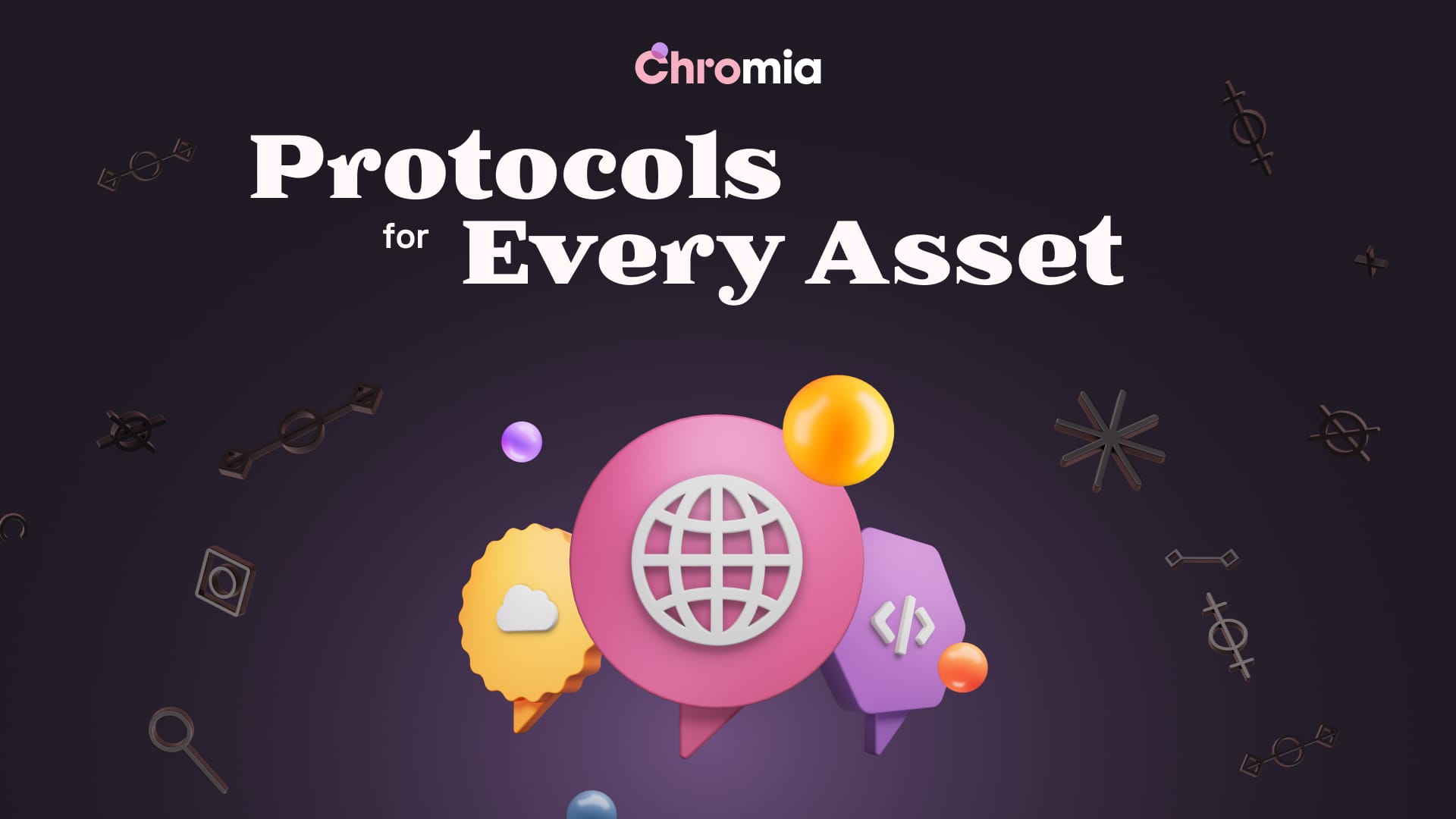Chromia is a modular dapp platform that combines the decentralization of blockchain with the efficiency of relational databases. Chromia's technology empowers builders by delivering innovative features for developers. Because we envision Chromia as a platform that can deliver a wide range of applications, it is important to provide protocols that can support a wide range of digital assets. Let’s take a look at these protocols:
FT4 - Flexible Token Standard
FT4 provides a universal format for fungible tokens across the Chromia ecosystem. Most of the assets used in everyday transactions fall under the category of fungible assets. A prime example is ERC-20/ERC-1155 fungible tokens, which are the most commonly used tokens in the blockchain space.
Chromia will use FT4 as an equivalent to the ERC-20 token standard. In fact, when ERC-20 tokens are bridged to Chromia, they will be represented as FT4 tokens. However, it's important to note that FT4 is not merely a clone.
Chromia provides a high degree of flexibility in both its account system and the FT4 protocol, allowing for more customization. FT4 gives developers a comprehensive base set of features, but also allows them to further expand upon them to suit the needs of their specific dapp.
Moreover, Chromia's design eliminates the distinction between a native token (i.e., ETH) and other tokens. On Ethereum, sending ETH is cheaper than sending USDT, or trading ETH for USDT is cheaper than trading USDT for USDC. On Chromia, these discrepancies will not exist, creating a level playing field for all tokens and transaction types.
Version 0.1.0 of the FT4 Protocol was released in 2023. Development is underway to provide an official wallet called Chromia Vault and integrate FT4 with our EVM asset bridge.
Chromia Enhanced NFTs and Originals Protocol
Non-Fungible Tokens (NFTs) are unique digital assets widely used for digital art and collectibles. Ethereum's ERC-721 and ERC-1155 non-fungible are the prevailing standards for NFTs, but they have limitations, such as high on-chain data storage costs and reliance on centralized services for hosting metadata and images.
Chromia offers a solution by enabling larger metadata storage and on-chain storage of NFT image files. This ensures full decentralization, making NFTs on Chromia self-reliant. The VfB Stuttgart marketplace on Chromia Appnet exemplifies this with its use of Filehub for image storage.
Chromia is also developing "Originals," a framework for enhanced NFT implementation. Chromia's EVM interoperability will even make it possible for NFTs on other chains to store metadata and images on Chromia in the future.
For more information on Chromia Originals, click here. The MVP version of this protocol is expected to launch later this year.
Ledger Digital Asset Protocol (LDAP) for Real World Assets
Real-World Assets (RWAs) are experiencing rapid growth in the blockchain space. To address this, ChromaWay designed the Ledger Digital Asset Protocol, or LDAP. An EVM version of this protocol is already in use, and a Chromia-based version is expected in 2024.
The Chromia version of the protocol will bring several advantages over the EVM equivalent, as explained by ChromaWay’s VP of Business Development, Todd Miller:
“At present, roughly 25% of RWA processes and data are managed on-chain… a major limiting factor is the data storage capacity of EVMs, which caps at 40 MB. This is quite restrictive, especially when dealing with extensive documents like investment prospectuses, investor reports, and sponsorship agreements that typically exceed this limit.
Chromia's use of a relational database offers a significant advantage, allowing us to shift a larger portion of these processes and data onto the blockchain. Additionally, Chromia's unique fee structure, which does not employ conventional gas fees, significantly reduces costs for processing various transaction types.”
Estimates have suggested that the RWA market could grow to $10T USD by 2030. With LDAP, Chromia will be positioned to deliver an advanced solution in a rapidly expanding sector.
Learn more about LDAP here.
Protocols for Every Asset
Chromia's commitment to developing protocols for every type of asset underscores its mission to be a comprehensive dapp platform that can address a myriad of use cases. These protocols offer innovative solutions that go beyond mere replication, setting Chromia apart in the blockchain space. With FT4, Enhanced NFTs, and LDAP, Chromia is positioning itself to serve the evolving needs of the Web3 market.
About Chromia
Modern society runs on data and every online service you’re using is built upon underlying databases - ranging from your online bank to music streaming and gaming. Chromia is a relational blockchain - a combination of a relational database and a blockchain - making it easy to develop user-friendly decentralized apps for almost any industry, including DeFi, NFTs, gaming, and more.
Website | Twitter | Telegram | Facebook | Instagram | Youtube | Discord
